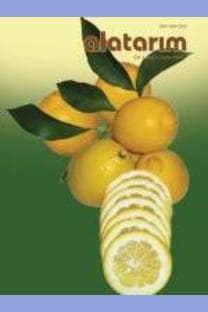Tozlaşmada polen ve nektar cezbediciliğinin önemi
Tozlaşma, çiçeğin anterinden gelen polen taneciğinin stigmaya taşınması işlemidir. Çok .sayıda bitki türünde başarılı bir tozlaşmanın sağlanması için değişik tozlaşma vektörlerine ihtiyaç duyulmaktadır. Bu vektörler, su ve rüzgar olabildiği gibi sinekler, karıncalar, arılar veya yarasa, salyangoz, solucan gibi canlılar da olabilmektedir. Bitkiler diğer bitkilerden polen taşınmasının yapılması için çeşitli özellikler geliştirmişlerdir. Böceklerle tozlaşan bitkilere ait polenler iri olup, yüzeylerinde çengeller, dikenler ve kraterler gibi oluşumlar bulunabilmektedir. Tozlaşmayı sağlayan böcekler, çiçekleri bulmak için görsel ve kokusal işaretler kullanmaktadır. Bir çiçeğin rengi, büyüklüğü, şekli ve yapısal düzenlemesi kadar kokusu da tozlaştırıcıya sunulan besinin kalitesi ve tipi hakkında bilgi vermektedir. Görsel işaretler tozlaşmada büyük önem kazanmaktadır. Bazı bitki türleri "hedef merkezi" olarak bilinen bir renk öğesi kullanmaktadırlar. Nektar rehberleri ise nektar kaynağından ışın yayan renk öğeleridir. Hedef merkezi olan benekler ve nektar rehberleri bir tozlaştırıcının görmesine yardımcı olarak sadece belirli renkler üzerinde onların ziyaretlerini yoğunlaştıran faktörlerdir. Farklı türde hayvanlar kokulara karşı farklı duyarlılığa sahip olduklarından koku işaretleri de tozlaşmada önem kazanmaktadır. Bununla birlikte nektar, polen, davranış özellikleri ile sunulan ödülle ilgili faktörler de tozlaşmada etkili kriterlerdir.
Anahtar Kelimeler:
nektar bitkileri, tozlaşma, çiçektozu, tozlayıcılar, bal arısı, böcekler, rüzgar
The importance of pollen and nectar attractiveness in pollination
Pollination is the process of moving the pollen, grains from the anther of a stamen to the stigma of a carpel. Most of species need some kind of pollination vector to accomplish pollination. These vectors may be water and wind as well as some insects like flies, ants, bees, wasps and some animals like bats, snails and earthworms. Plants have evolved a lot of characteristics for pollen transport from others. Animal-pollinated plants have large pollen grains with lots of tiny hooks, spines and craters on their surface. Animal pollinators use visual and olfactory cues to find the flowers. Scent of a flower as well as its color pattern, size, shape and structural arrangement give information to pollinators about the type and quality of the food reward. Many plant species use a color pattern, which is known as the "bull's eye". Nectar guides are color patterns that radiate out from the source of the nectar reward. The bull's eye, spots and nectar guide are the factors that help the sight of a pollinator only in concentrating its visit and specific colors. Since different animals have sensitivity on different colors, the signs of odor are importance in pollination. In addition to these factors related to the presented reward also effective in pollination.
Keywords:
nectar plants, pollination, pollen, pollinators, honey bees, insects, wind,
___
- Corbet, S.A., Kerslake, J.C., Brown D., Morland, N.E., 1984. Can Bees Select Nectar Rich Flowers in a Patch? Journal of Apic. Res., 23(4):234-242.
- Corbet, A.S., Williams, I.H., Osborne, J.L., 1991. Bees and the Pollination of Crops and Wild Flowers in the European Community. Beeworld. 72
- Dafni, H., Lensky Y.,Fahn A., 1988. Flower and Nectar Characteristics of Nine Species of Labiatae and Their Influence on Honeybee Visits. Journal of Apic. Res. 27(2): 103-114.
- Dobson, H.E.M. 1988. Survey of Pollen and Pollenkitt Lipids-Chemical Cues to Flower Visitors? Amer. J. Bot. 75(2): 170-182.
- Horn, C.J., 1997. Pollination Adaptations. Internet Erişim, http://koning.ecsu.ctstateu.edu/Plants_Human/pollenadapt.html.
- Morgalith, R., Lensky, Y., Rabinowitch, H., 1984. The Evaluation of BeelineRas a Honeybee Attractant to Cucumbers and Its Effect on Seed Production. Journal of Apic. Res., : 23:50-54.
- Rabinowitch, H.D., Fahn, A., Meir, T. 1993. Flower and Nectar Attributes of Pepper {Capsicum annuum L.) Plants in Relation To Pollination. Annuals of Applied Biology, 123:226-232.
- Robinson,G.E., 1980. Pheromone in Action. Bioscience, 49:(2),154.
- Szalai, Z., 2000. Differences of Pollen and Pollenkitt Attractiveness of Some Cultivated and Ornamental Apples for Honeybees. The 8th International Pollination Symposium. Mosonmagyarovar, July 10-14, Hungary.
- Widrlechner, M.P., Senechal, N.P., 1992. Relationships Between Nectar Production and Honeybee Preference. Beeworld, 73.
- ISSN: 1304-2653
- Başlangıç: 2015
- Yayıncı: Alata Bahçe Kültürleri Araştırma Enstitüsü
Sayıdaki Diğer Makaleler
Farklı derim sonrası uygulamaların Red Globe üzüm çeşidi muhafazasına etkileri
Okan ÖZKAYA, ÖMÜR DÜNDAR, Ahmet Erhan ÖZDEMİR, Ramazan DİLBAZ
Tozlaşmada polen ve nektar cezbediciliğinin önemi
Bitki biliminde kulanılan genetik markırlar ve kullanım alanları
Ülkemizde dut (Morus spp.) üretimi ve değerlendirilmesi
ÜMMÜGÜLSÜM ERDOĞAN, LÜTFİ PIRLAK
Fasulye antraknozu (Colletotrichum lindemuthianum) hastalığına dayanıklılığın kalıtımı
Seher Yıldız MADAKBAŞ, Şebnem ELLİALTIOĞLU
Alabaş (Brassica oleraceae var. gongylodes L.) yetiştiriciliği
